#ignacio mendoza
Text

"C'mon, Maurice! We're family! It's important to support your brother—Peppino is a good man!"
So I recently drew up a design for a headcanon relative to Peppino—his younger half-brother Ignacio, who is Sy's father and the point of connection between the two.
Imagine my surprise when I saw Maurice in McPig's stream today!
I ended up spurred on to draw this little thing partially for fun, but partially because I felt bad seeing Peppino get put down by Maurice all the time, and thought it'd be nice to draw his chill little half-brother showing some solidarity. Peppino may not like Ignacio that much, but Ignacio does like him, and he'd definitely come to his defense if he noticed him getting put down, whether by a stranger or family.
73 notes
·
View notes
Text
Just published: "Historiographical Alexander: Alexander the Great and the Historians in the nineteenth and twentieth centuries" by Borja Antela-Bernárdez and Marc Mendoza (editors)
Good day everyone I’m Elena from Italy and thanks to be here on Alessandro III di Macedonia- website about Alexander the Great and Hellenism! I just found a new interesting book just published and I’ve already pre-ordered. It’s
Historiographical Alexander: Alexander the Great and the Historians in the nineteenth and twentieth centuries
by Borja Antela-Bernárdez and Marc Mendoza…
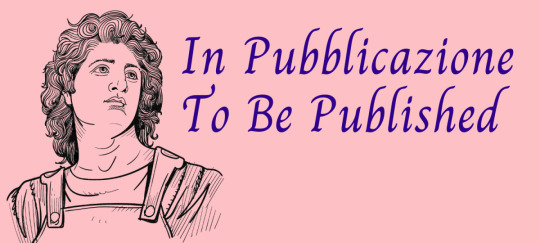
View On WordPress
#Antonio Ignacio Molina Marín#Borja Antela Bernárdez#Coimbra University Press#Eran Almagor#Guendalina D.M. Taietti#Jaakkojuhani Peltonen#Marc Mendoza#Prossime uscite
0 notes
Text
Ante el dengue y falta de pago a afanadores, el sistema de salud en Puebla está en crisis
Ante el dengue y falta de pago a afanadores, el sistema de salud en Puebla está en crisis
#PeriodismoParaTi #SociedadNoticias
#Sanidad #Puebla #Limpieza @Gob_Puebla @SergioSalomonC #Sopor #ServiciosSopor @SaludGobPue @JLozanoA @SergioSalomonC #Dengue
“Servicios Sopor SA de CV” ha incumplido, también, con uniformes e insumos. Alertan de contagios infecciosos en nosocomios de Puebla.
Por Jorge Hernández | Corresponsal
Puebla, Puebla.- A unos días de que José Antonio Martínez García fuera nombrado titular de la Secretaría de Salud por el gobernador Sergio Salomón Céspedes Peregrina, el especialista en…

View On WordPress
#Alejandro Armenta#Andrés Villegas Mendoza#Andrés Villegas Mendoza; el consejero jurídico#Anotnio Lozano#Ante el dengue y falta de pago a afanadores#Barbosa#Barbosa Huerta#Delincuencia#el sistema de salud en Puebla está en crisis#Hospital general#Hospital General Sur Puebla#Ignacio Mier#IMSS#Javier Lozano alarcón#Jesús Rodríguez Campos#Jonathan Ávalos Meléndez#José Antonio Martínez García#la falta de pago a afanadores pone el sistema de salud en Puebla en crisis#La Feria de Puebla 2023#limpieza#Martha Meléndez Benavidez#Miguel Barbosa Huerta#Puebla#sanidad#Sergio Salomón Céspedes#Sergio Salomon#Sindicato Nacional de Trabajadores de la Educación (SNTE)#SN#SNTE#Sociedad
0 notes
Text
Characters futures - de Soto, Mendoza and minor characters
Ignacio de Soto is next on our list. I’m afraid we can’t expect a lot of story out of him, with Spain losing California so very soon. But to make it slightly interesting, I think I’ll have an enemy of Gilberto arrange a promotion for him. Timing it out is kind of issue. He leaves only 3 months after the series ends, so I guess we need someone nearer than Spain to do the arranging of things, as there isn’t really time for the message to travel there and back.
Jaime Mendoza is a sergeant. But Mexico is broke and they don’t want to keep so many soldiers out in California. I know California soldiers under the Spanish system could get a disability pension, but I don’t know if there was a retirement pension (which Mendoza would get, as he was a soldier a long time) or if he would just get some land.
I waffle a lot on what to do with him.
Assuming he has a small pension, he does not work any land he has (there have been jokes about him avoiding that sort of work before). And after a Victoria has a child, she hires him to manage the tavern (and he does well, more like in the first season ep than later). He’s literate and keep the daily books, and of course Victoria reviews them.
Tentative plan at the moment is to have him marry in 1825, but I don’t want him marrying someone young enough to be his daughter, so he marries a widow six years younger than himself. While he’s a nice guy, she was not interested back when he was soldier. She only really interacts with him after he retires. She has three children. At the time of the marriage, she has a 23 year old son that she lives with – he inherited his father’s home and small plot of land and has a 21 year old wife and a 2 year old daughter. Also she has a 20 year old daughter who is expecting her first child – unsure if they live with his family or hers or just themselves. Her third child is her 11 year old son who will grow up and eventually own a general store. He and Jaime are close. Jaime’s oldest step-granddaughter names her oldest son after him. Mendoza dies in 1846 at 70 years old.
Now, on to minor characters that I’ve decided to do something with.
Jose Rivas had a goal of one day owning a lot of land, and he achieved it. Even when we saw him in “Rush to Judgement” his circumstances seemed much improved from his first appearance. He continues to grow and expand, through both purchase and later land grants. He marries shortly after the series ends, and our characters will attend his wedding. He got a couple more decades of growing to do, but he’s in a financial state where he’s ready to marry. He’s certainly prosperous compared to the typical person at this time but nowhere near the heights to socialize with the wealthy. He marries a woman who’s grandmother was a poblador (not sure on spelling – original settler of Los Angeles). Grandma was mulatto, but her kids and grandkids are perceived as mestizo. The marriage was more of fondness and mutual goals than love or passion. Big families were fashionable among the wealthy and he’s getting wealthier, so he had six children (one died in infancy). His youngest daughter (third child) marries Diego’s youngest son.
Maria Valverdes was the one whose husband Jose was accused of murdering. She was much younger than her husband. So for my story, it was an arranged match. She was fond of him, and sad he died. But she was never wooed or courted, and wanted romance. She couldn’t have kids anyway, so she discreetly took up with a similarly ranked fellow a few years her junior. Except it turns out it was her husband who couldn’t have kids, and she’s in trouble now. The fellow would have married her (she’s quite wealthy), but he already married someone else he knocked up by time she found out she was pregnatn. She assumed he was seeing others – she’d never planned to marry him, but was just having a bit of what she thought was pretty safe fun. But it does leave her in a pickle. But while illegitimacy was certainly a stigma, out in California at that time it wasn’t future-destroying – not with the child’s “good blood” and no legitimate siblings to lay claim to her mother’s fortune. The baby will actually end up marrying Diego’s oldest daughter’s brother-in-law (these families marry into each other a lot).
Rafael and Margarita are happy together, despite their rocky start. We first see them again when Rafael’s dad and all his kids and grandkids go to Los Angels for a big party for Alejandro’s 60th birthday. At this point Rafael has two daughter – a one year-old and almost-four year-old. Definitely makes Diego think about the life he’s missing out on. At this point, he and Victoria are not yet pretending to be courting. Margarita wants to make up for prior actions against Victoria, so decides to set her up with Diego, regardless of difference in rank. Our heroes get wind of this and roll with it. They are totally laughing at Margarita. But it does make a good way for them to publicly begin a romantic relationship.
Rafael and Margarita will eventually have 6 children (4 girls, 2 boys). Rafael has two younger sisters, but he inherits the entire rancho. His sisters get equal value, but theirs is in cattle, jewelry, money, and other movable goods rather than land. Rafael also bequeaths his own estate in six equal parts. The land is divided between his two son and his youngest (only unmarried) daughter, while the other daughters get cash.
Francisco Escalante has a bright future ahead of him. He’s ambitious and climbing the ladder. Many soldiers switched sides to support independence in the end and he’ll be one of them. It’s not like he was ever all that loyal, give his family history. Having made the right allegiances, he’s rewarded with a land grant in California. He’s very much pleased at the idea of becoming a caballero. But it will take time. So, to start with, he’s assigned a post in California (not Los Angeles). He reconnects with a woman he’s been courting, but not yet in a financial position to marry. With his new circumstance, a wedding follows soon enough. Her family aren’t rancheros, but aren’t peasants, either. She’s a of a higher class than one he was born to, but one suitable to a lieutenant without family connections to wealth and power.
Victoria gave him some money (which is really just his portion of the inheritance, since it was left all to her after dad and brothers took off), and he uses that to help set up the rancho. He keeps his job. By 1827, the rancho is profitable enough for him to leave his work and move to Los Angeles.
Francisco’s wife dies in 1830, during childbirth with their third son (who also died). Later on, after secularization, he will acquire another land grant, double the size of his rancho. He will leave one to each of his surviving sons. Francisco dies in 1845, so he never has to see the Americans overrun his home. Though that also means he never gets to say “I told you so.” (Well, he did after what happened with Texas, technically, but you know what I mean). He was very unhappy with the Anglos moving in and said it would not end well for Californios.
His sons are 18 and 22 when he dies. And they right before the Mexican American war and then the gold rush and them making more money than they ever thought about. And that slows down, and then there’s a really horrible drought and just a busy couple decades.
Ramon Escalante is headed back home to Los Angeles, too. Like Victoria, he’s got a good head for business. With his inheritance, he sets up a drayage business and build a warehouse at San Pedro. He’ll do well financially and eventually that success will lead to him getting a land grant (half the size of his brother’s original one) and he’ll have some cattle and vineyard. He’ll actually get into shipping too – renting space on boats others own to bring goods into Los Angeles that he thinks will sell well.
Ramon takes to courting a neophyte at the Mission San Gabriel, and they marry. She really does not like the church at all. It’s the church that calls them perpetual children, refuses them control over their own lives, etc. She had a lot siblings and she was the only one to survive to adulthood (child mortality rates in southern California missions were horrible). It is, however, unwise to share one's deep dislike of the church, and she keeps her mouth shut about it. She’s been married a couple of years before even her siblings-in-law know.
They will have five children. Two will go to San Francisco to make their fortunes in the early 1850s.
0 notes
Text
Zorro (Get your swashes buckled, folks!)
[All images are owned by New World Television and Zorro Productions, Inc (really!) Please don’t sue me or ruin my clothing with Zs]
youtube
(Thanks to megafan_12)
For those who are unaware, Zorro (“The Fox” in Spanish) is a masked swordsman who fights a corrupt government in the same vein as Robin Hood or the Scarlet Pimpernel, but in the town of Los Angeles during the time California was under Spanish/Mexican rule. Much like the aforementioned literary heroes, Zorro is a member of the local aristocracy (Don Diego de la Vega, son of one of the largest landowners in the region) who acts like a dandy and a coward to hide his masked activities.
He has been in literature since 1919 and has been in several movies and television shows (usually by a white man) In fact, it wasn’t until the 70s that a Latino (or Spanish) actor was cast in the role! Talk about injustice!
Most people know the Zorro films that starred Antonio Banderas as the title character (who inherited the mantle from Anthony Hopkins, yet ANOTHER white guy!) Many have seen Guy Ritchie as Zorro in the 50s (who didn’t need to worry about being white since the series was filmed in black & white and no one could tell his skin tone) The film I was first introduced to the character was Zorro, the Gay Blade (no, it wasn’t porn!) which starred Goerge Hamilton (yep, another while guy) as Don Diego and his twin brother Ramon (AKA “Bunny Wigglesworth” who was, shall we say, a bit flamboyant) The less said about that film, the better.
But the subject for this review was a forgotten gem from the 90s that aired on the cable network known as The Family Channel (I swear I saw it in the USA Network, but I couldn’t find any record in my research to prove this)

The series, naturally, follows Don Diego (played by Duncan Regehr yet ANOTHER white guy!)

…and his masked alter ego. (NOTE: Regehr was more muscular and fit than most previous actors in the role, meaning he could be a bit more physical. The character was also written as being a bit of a science buff)
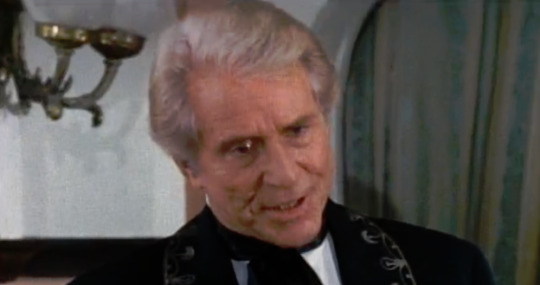
Don Diego lives with his father Don Alejandro (played by Efrem Zimbalist Jr (yep, also white), who voiced Alfred in Batman: the Animated Series, in season 1…

…and Henry Darrow (FINALLY! A Latino actor, and one who actually played Zorro a few years earlier!) for the rest of the series)
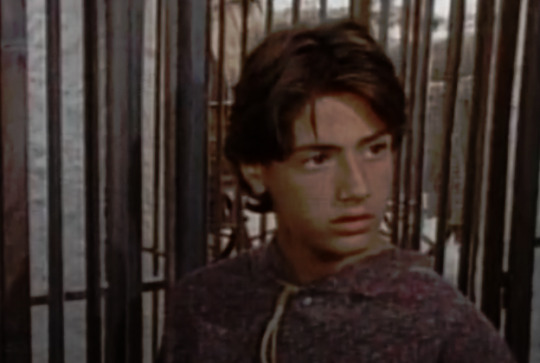
…as well as his family’s mute servant Felipe (played by Juan Diego Botto), who also pretends to be deaf and is the only one who knows Don Diego’s secret (it’s not like he can tell anyone)

Don Diego’s love interest is Victoria Escalante (played by Patrice Martinez, who also played the love interest in The Three Amigos)

Zorro fights the corrupt Alcalde (governor) of the territory around Los Angeles Luis Ramone (played by Michael Tylo...yep, another one)

…but was replaced in season 3 by Ignacio de Soto (played by J.G. Hertzler (Seriously?!))

The Alcalde’s chief aide (and leader of the garrison) is Sgt. Mendoza (played by James Victor, the ONE Latino on the bad guys' side), who is the comic relief (of course...) for the series (which explains why they can never stop Zorro)
The plots generally revolve around the Alcalde’s latest plot to stop Zorro by trapping him while performing some form of injustice against the people of Los Angeles, only to be foiled. Note that while the series is very by-the-numbers, the action sequences are well done and there are a number of well-known (or soon-to-be-well-known) actors (as well as, for some reason, a handful of World Wrestling Federation wrestlers) who have guest starred.
As always, if you would like to see an episode reviewed, please let me know!

5 notes
·
View notes
Text
19 décembre :
Hélas la fin de mon séjour au Brésil arrive déjà. Avant de rentrer en Argentine je visite le barrage d'Itaipu situé sur le fleuve Paraná qui sépare le Brésil du Paraguay. Mais je devrais plutôt écrire "qui unit", puisqu'il s'agit d'un site "binacional" où l'on se situe à la fois au Brésil et au Paraguay en même temps. Cette centrale énergétique est tout autant une prouesse technique que diplomatique; chaque pays détenant 50% de l'énergie produite et toute l'administration étant divisée entre les deux pays (2 PDG). 2e plus gros barrage au monde après celui des trois gorges en Chine, les installations sont impressionnantes; j'ai même visité une turbine en fonctionnement dont on ne voyait "que" l'arbre qui reliait la turbine à l'alternateur (!!!). De retoure à Puerto Iguazu en Argentine j'enchaîne avec un bus de 4h jusqu'à San Ignacio. Arrivé en fin de soirée je me couche direct.
20 décembre:
Si je suis dans ce village c'est parce qu'il se situe dans la région où les Jésuites se sont implantés à partir du XVIe siècle. De véritable cités monastiques en autarcie exclusives aux guaranis se sont ainsi développées pendant à peu près 2 siècles avant que l'ordre ne se fasse expulser par les couronnes espagnol et portugaise. Puis les guerres entre les nouveaux pays formés de nouveau monde on finit d'achever ce qui restait des missions. Du coup il ne reste que des ruines qui sont aujourd'hui plus nettoyées que restaurées et classées patrimoine mondiale Unesco. BREF, j'ai visité celle de San Ignacio, j'étais tout seul, et ça m'a fait pensé un peu à Angkor Wat, des ruines dans la jungle qui sortent d'un temps perdu et mystiques. On a envie de se téléporter dans le temps et faire revivre cette société "communiste" (mais aussi esclavagiste, rien n'est parfait finalement avec cette doctrine). Puisque je suis dans la jungle autant profiter de cet enfers vert. Je loue donc un vélo (tout aussi pourri que la VW que j'avais loué) pour me rendre au parc Teyucuaré et admirer des points de vue sur le Paraná. Il fait trop chaud; 38° et 1000000% d'humidité. J'ai mon 1er accident de drone quand je le fais décoller direct sur un arbre... il se casse la gueule devant moi (une torture à regarder) mais j'arrive à le faire revoler malgré un bras disloqué que je n'arrive plus à replier. Il s'en sort... l'après midi je prends un bus de 1h pour Posada, la grande ville de la région.
21 décembre :
Je continue donc ma visite des missions Jésuites à partir de Posada, à la frontière Paraguayenne, que je franchi pour visiter Trinidad. Tout autant en ruine que San Ignacio, je prends autant de plaisir à m'y balader. Je passerai 4h à faire l'AR depuis Posadas pour 40min de visite mais j'ai mon tampon du Paraguay sur mon passeport, et ça, ça n'a pas de prix. Puis je refais le grand saut du retour vers Córdoba avec un bus de 18h. Mention spéciale à Yuri, un Paraguayen que j'aurai croisé 2 fois et qui m'expliquera comment il est poursuivi par les mafias, comment Dieu exterminera ses ennemis avec des éclairs, et comment il a le droit d'user de la forces d'ici là. Aucune idée comment je me suis retrouvé à papoter avec lui mais j'ai vite pris mes distance avec ce fou furieu.
22 décembre :
Arrivé à 9h à Córdoba que je connais déjà, je m'occupe comme je peux jusqu'à prendre mon bus de 23h30 pour Mendoza. Je fais entre autre un musée d'art moderne puis un musée d'art contemporain dont je ne comprends absolument rien. Vivement retrouver les Andes, ça fait 2 nuits de suite que je rêve (littéralement) de randonnée.
23 décembre :
Arrivé à 09h00 à la capitale viticole d'Amerique du sud, je découvre la ville surtout pendant mon trajet à pied de la gare routière à mon hostel. La ville a été détruite pendant un tremblement de terre et il n'y a pas vraiment d'attraction touristique. Par contre elle a été reconstruite avec de larges trottoirs sous de gros arbres abritant les piétons du soleil; c'est très agréable. Journée logistique : lessive, achat camping gaz, transfert vidéos sur le cloud, courses en prévisions de mes prochains bivouacs, apero (je respecte le région et ça sera du vin cette fois).
24 décembre :
Sans émotions de m'éloigner de la civilation en ces jours où les relations sociales sont de coutume, je pars m'isoler dans la montagne. Que Mendoza soit réputée pour son vin, c'est comme l'eau sur les plumes d'un canard, ca glisse (ballec), qu'elle soit située au pied de l'Aconcagua (6990m !!!), sommet des Amériques, le canard s'est pris un obus dans la gueule. Du coup, bus jusqu'au lieu dit "las cuevas" juste avant le tunnel qui mène au Chilie (officiellement je suis d'ailleurs ni en Argentine ni au Chilie, étant entre les 2 postes frontière). Puis, ENFIN, je randonne jusqu'à un lac gelé situé dans une vallée aux couleurs incroyables, ça ressemble un peu aux Alpes mais en plus austère, toujours ces touches rougeâtres qui doivent être du à l'immersion de cette chaîne de montagne gigantesque dans l'océan, et qui doit être à l'origine de tous ces matériaux donnant des couleurs originales. Je voulais camper au lac mais c'est assez exposé au vent et je ne n'avais pas prévu qu'il soit gelé, je risque de passer une sale nuit dans le froid (pourtant je ne suis "que" à 3700m). Je plante ma tente plus bas à 3500m, ce qui ne m'empêchera pas d'avoir un peu froid. J'ai une vue panoramique sur la vallée, je suis complètement seul, la "presque" pleine lune prend le relais au soleil donnant un spectacle de lumière.
Bilan: 10km, 600m d+
25 décembre :
Grosse journée au programme. Je reviens sur la ruta 7, qui relie Buenos Aires à Santiago, pendant le réveil du soleil. Puis je monte au Pico del Cristo Redentor, marquant la frontière avec le Chili. Belle vue mais pas aussi impressionnante que décrit par le routard. Puis stop jusqu'au sentier qui mène à la Laguna Horcones, dans le parc provincial Aconcagua, et que je dois donc payé (3eur). Belle vue sur l'Aconcagua. Parenthèse ouverte sur ce parc: ça aurait été un pure bonheur que d'essayer (restons humble) de monter au sommet de l'Aconcagua. Il n'est pas du tout technique (moins que le Huyana Potosi en Bolivie) et le "seul" challenge, c'est l'altitude. Sachant que j'ai fait un sommet à 6300m sans ressentir aucun effet d'altitude, j'avais très envie de tester mes limites. MAIS, s'y aventurer coûte 5000e, rien que le permis pour y accéder c'est 1000e. On est loin des 40eur que j'ai payé pour le Parinacota (6300m). Donc j'y fais l'impasse et je me ballade hors de ce parc. L'accès à la nature doit être un bien publique et je refuse de participer à sa commercialisation. Parenthèse fermée. Puis stop jusqu'à la puente del Inca ou je fait le début de la randonnée menant au Cerro Penitentes. La nuit je sors ma tête de la tente et je vois que toute la vallée est éclairée par la pleine lune. J'en suis émus tellement c'est merveilleux.
Bilan: 23km, 1100m d+
26 décembre :
C'est parti pour finir le (gros du) travail entamée la veille. Day pack et je grimpe 1400m d+, traverse 4 gués dechaussé, pour arrivé à 4400m d'altitude sur un plateau aux falaises verticales et qui domine mon bivouac. Le paysage me fait toujours penser aux Alpes, mais en tellement plus impressionnant... pour commencer j'ai une vue directe et dégagée sur le mythique Aconcagua, et tout autour sur 360°, plein de monts blanc (oui au pluriel), des vallées, un lac turquoise, des cours d'eau (c'est le debut de l'été et la montagne perd toute ses eaux). J'ai l'impression d'être au sommet du monde, noyé dans un univers qui, littéralement, me dépasse. Je redescends, reprend mon gros sac au bivouac, et reviens sur la ruta 7. L'autostop sera infructueux et je médite sur comment l'humain peut être naturellement bon lorsque le contact est direct, et naturellement un gros connard lorsqu'une barrière nous sépare; ici un pare-brise. Donc je marche jusqu'à un bled et attends 1h le bus qui m'amène au village d'Uspallata où je dormirai au camping.
Bilan: 22km, 1500m d+
27 décembre :
Ah j'oubliais: Feliz Navidad! Sans festivité, je prends le bus du retour pour Mendoza où je me repose jusqu'à l'heure de l'apero mais surtout du dîner. Mendoza étant réputé pour sa gastronomie je me fais un bon resto. Et bien les argentins n'ont obsolument rien à envier à nos vins, ils sont excellents et surtout très bon marché. Un (gros) verre ne coûte que 1,5eur. La viande est sans surprise dionisiaque, fondante dans la bouche, et le rhum Barceló Gran Anejo (République dominicaine) d'une douceur qui manque je trouve aux rhums Martiniquais (ma seul référence).
2 notes
·
View notes
Note
what places do u want to visit in argentina? I need to fullfil my ego argento🗿
ohhhh anonie there are so many argentina is probably the country i want to visit most, amd i was supposed to live in Buenos Aries for 9 months but the pandemic stopped it, so here's my list:
Parque Nacional Los Glaciares, Mirador del Fitz Roy, Cueva de las Manos, Parque Nacional Los Alerces, Nahuel Huapi Lake, Ischigualasto Provincial Park, El Área natural protegida Campo de Piedra Pómez, Cafayate, Perito Moreno glacier, Quebrada de Humahuaca, Ruinas de San Ignacio Miní, Tierra del Fuego National Park, Puerto Madryn and the valdez peninsular and whale watching, Mendoza + Aconcagua mountain, the salt flats around Purmamarca
This is not counting many of the cities at all OR anything id love to do in Buenos Aries itself!
Also not even counting any of the hikes i want to do there, ideally id spend about a month just hiking various places in the Andes, but also and especially the Tierra Del Fuego National Park, the Laguna Del Los Tres and around there, and ascending Aconcagua mountain and Huella Andina!
#i am trying to go to argentina sometime this year but flights are so fucking expensive i dont think it will happen#but if you can reccomend any more places feel free i need to know morrrreeee
3 notes
·
View notes
Text
Luis Mendoza Benedetto, icona del calcio venezuelano, è scomparso, riceviamo l'articolo di Ignacio Laya dal campione di football Angelo Felice Morelli, pubblicazione di Elisa Mascia da San Giuliano di Puglia -Campobasso
È morto Luis Mendoza Benedetto, icona del calcio nazionale del Venezuela
(Pressa per sedia galleggiante)
Oggi il mondo sportivo nazionale si è vestito a lutto per la morte del calciatore Luis Mendoza Benedetto, stimato dagli addetti ai lavori come il giocatore e allenatore più emblematico del Venezuela.Mendocita, i cui nonni materni erano italiani, ha lasciato un segno profondo come il miglior…
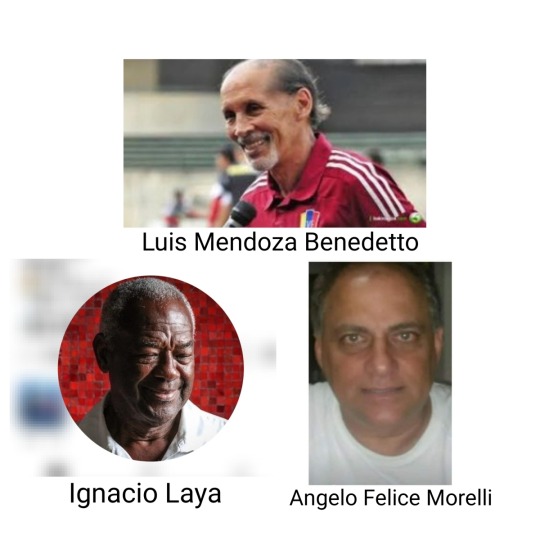
View On WordPress
0 notes
Text
La andanzas del chileno Ignacio Purcell Mena en España y Argentina, siguiendo las huellas del narcoterrorista sirio Monzer Al Kassar
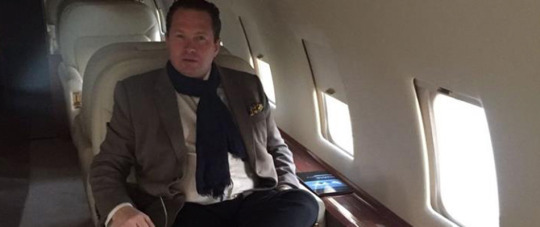
El financista chileno Ignacio Purcell Mena, vinculado al traficante de armas sirio Monzer Al Kassar, fue expulsado del país tras ser declarado culpable en un juicio abreviado que se realizó en los Tribunales Federales de San Martín y en el que se lo acusó de falsificar documentos, revelaron hoy fuentes judiciales.
Purcell Mena estaba detenido desde 2017 en el penal de Marcos Paz en el marco de una causa en la que se investiga una maniobra para fraguar documentos en el Registro Civil de Don Torcuato, y que es instruida por la jueza federal de San Isidro Sandra Arroyo Salgado.
"Mi cliente ya está en Santiago, donde llegó ayer. Fue declarado culpable de falsificar un pasaporte y se convino su expulsión. No podrá volver al país por cinco años", precisó a Télam César Albarracín, defensor de Purcell Mena.
La detención de este financista se produjo en julio de 2017 en Haití por orden de la magistrada, quien además investigaba estafas cometidas por el ciudadano chileno en Mendoza con documentación apócrifa.
La captura de este ciudadano chileno se produjo cuando se presentó ante el Consulado de Estados Unidos en Puerto Príncipe, capital de la nación caribeña.
El chileno intentaba obtener un visado que le permitiera ingresar al territorio norteamericano, pero en medio de esta tramitación se detectó que había un pedido de detención en su contra.
Con un documento falso a nombre de José Alberto Figueroa, Purcell Mena adquirió de forma irregular un campo de 3000 hectáreas en la zona de Crucesita, en la localidad mendocina de Luján de Cuyo.
No es la primera vez que Purcell Mena es acusado de utilizar documentos falsos para la comisión de estafas, ya que tiene por este delito una condena de 20 meses dictada en España por estafa y falsedad.
Mediante un pasaporte británico manipulado hizo figurar a un cómplice suyo llamado Naief N. Al Salan como un príncipe saudita con el propósito de adquirir en forma asociada unas propiedades en las afueras de Madrid.
Por esa causa, el chileno estuvo detenido y en la ficha policial española que se confeccionó con sus datos figura el último domicilio que Monzer Al Kassar dio en España antes de su detención: Atalaya Río Verde 4, Puerto Vanus.
Monzer Al Kassar fue célebre en la Argentina durante el gobierno de Carlos Menem, en la década de los 90, cuando intentó vender armas de guerra argentina al exterior.
Tras conseguir en tiempo récord su documento argentino -para él y su familia- el sirio mantuvo una estrecha relación con la familia del por entonces presidente.
Al-Kassar fue condenado en el país a cinco años de prisión por "irregularidades en la obtención" de su documento nacional de identidad, pero nunca fue extraditado desde España. Pero luego fue detenido por EE.UU. por supuestamente vender armas a la guerrilla colombiana.
0 notes
Text

Descorchados 2024 reuniu mais de 1.700 pessoas entre os estados de São Paulo e Rio de Janeiro
A 26ª edição do Guia Descorchados chegou ao fim, encerrando uma jornada que percorreu as cidades de São Paulo e Rio de Janeiro, reunindo expoentes e produtores de vinhos latinos-americanos.
Com um número recorde de participantes, o Descorchados 2024 cativou mais de 1.7000 visitantes, com 1.100 deles em São Paulo e +600 no Rio de Janeiro. Em São Paulo, 108 expositores se reuniram para apresentar o que há de melhor na produção vinícola sul-americana, enquanto no Rio de Janeiro foram 51 produtores a compartilhar suas preciosidades.
Ambos os eventos foram palco para a presença marcante de renomados produtores e enólogos, que trouxeram consigo não apenas vinhos de alta qualidade, mas também todo o conhecimento e paixão que permeiam a cultura do vinho na América Latina. No Rio de Janeiro, especialmente, a ampliação do espaço permitiu não só acomodar mais visitantes, mas também receber uma seleção ainda mais diversificada de produtores, entre eles nomes de peso que contribuíram para elevar ainda mais o prestígio do evento.
Dentre os expositores e enólogos presentes em ambos os estados, estavam: Alejandro Vigil, Catena e El Enemigo; Sebastian Zuccardi, Famiglia Zuccardi; Felipe Toso, Ventisquero; German Bruzzone, Garzon; Juan Pablo Murgia, Otronia e Argento; Felipe Muller, Tabali; Adolfo Lona; Alejandro Cardoso, Sacramentos Vinifer; Santiago Deicas, Familia Deicas; Marcelo Papa, Concha y Toro; Matias Rios, Cono Sur; Brett Jackson, Caballo Loc; Juan Pablo Michelini, Altar Uco; Marco de Martino, De Martino; David Bonomi, Norton; Andrea Ferreyra, La Celia e Daniel Dalla Vale, Casa Valduga.
Confira abaixo a lista de expositores presentes no evento:
São Paulo: Aresti, Cousiño Macul, Valdivieso, Viñedos Puertas, Invina, Requingua, Koyle, Agustín Lanus | Bandoleros, Finca El Recreo, Los Haroldos | Hermandad, Sin Reglas, Sottano, Familia Millán, Altar Uco, Zuccardi, Antigal Winery & Estates, Pérez Cruz, Santa Ema, Viu Manent, Cremaschi Furlotti, Casas de Bucalmu, Bodegas Tagua Tagua, Las Veletas, Bodegas Caro, Carmen, Andes Plateau, William Fevre, Marchigue, Montgras, Norton, Doña Paula, Matervini, Miguel Torres, Clos de Luz | Mendoza & Carriel, Viñedos Orgânicos Veramonte | Viña Neyen de Apalta, San Pedro, Caliterra, Santa Rita, Tenuta Foppa & Ambrosi, Morandé, Dagaz, Vik, Viña Tabali, Basso, El Principal, Concha y Toro, Adolfo Lona, Sacramentos, Finca Sophenia, Los Vascos, Otronia, Montes, Garzón, Odfjell, Longavi, La Celia, Trapiche, Vinorum - Familia Altieri, Weinert, Bodegas Staphyle, Bouchon, Lagarde, Arboleda, Baron Philippe de Rothschild, Cono Sur, Emiliana, De Martino, Susana Balbo, Catena Zapata, El Enemigo, Argento, El Porvenir de Cafayate, Ventisquero, Casas del Toqui, Valduga, Ponto Nero, Las Perdices, Luiz Argenta, Vita Eterna, Vivalti, Familia Deicas, Nova Aliança, Siegel, Intipalka, La Coste de Los Andes, Kaikén, Bodega del Desierto, Compañía Uruguaya de Vinos de Mar, El Capricho, Campos de Solana, Bouza, Oceánica José Ignacio, Establecimiento Juanicó, Bracco Bosca, Cerro del Toro, Bohemian by Fiore, Familia Traversa, Spinoglio, Montes Toscanini, Manus, Vallontano, Audace.
Rio de Janeiro: Aresti, Cousiño Macul, Valdivieso, Viñedos Puertas, Invina, Requingua, Koyle, Bandoleros, Finca El Recreo, Los Haroldos, Sin Reglas, Sottano, Familia Millán, Altar Uco, Zuccardi, Antigal Winery & Estates, Pérez Cruz, Santa Ema, Casas del Bosque, Viu Manent, Bodegas Caro, Carmen, Norton, Doña Paula, Matervini, Miguel Torres, Caliterra, Santa Rita, Tenuta Foppa & Ambrosi, Basso, Adolfo Lona, Sacramentos, Finca Sophenia, Otronia, Garzón, Odfjell, Longavi, Bouchon, Arboleda, Baron Philippe de Rothschild, Cono Sur, Emiliana, De Martino, Susana Balbo, Ventisquero, Casas del Toqui, Las Perdices, Familia Deicas, Siegel, Intipalka, Campos de Solana.
__O evento é realizado anualmente e ocorre no Brasil desde 2012. É organizado pelo renomado crítico de vinhos chileno, Patricio Tapia e INNER GROUP, e tem como objetivo destacar os melhores vinhos da América do Latina. Todos os assuntos abordados no evento também podem ser encontrados no Guia Descorchados 2024. Nesta edição, o leitor encontrará a avaliação e classificação dos vinhos, sugestões de pratos para harmonização e uma exploração das regiões vitivinícolas da Argentina, Brasil, Chile e Uruguai. Os exemplares estão disponíveis nas versões impressa (R$ 295,00) e/ou digital (265,50) na internet.
abri/24, com copy a.seb via Orantes -- @orantesc.com
0 notes
Text
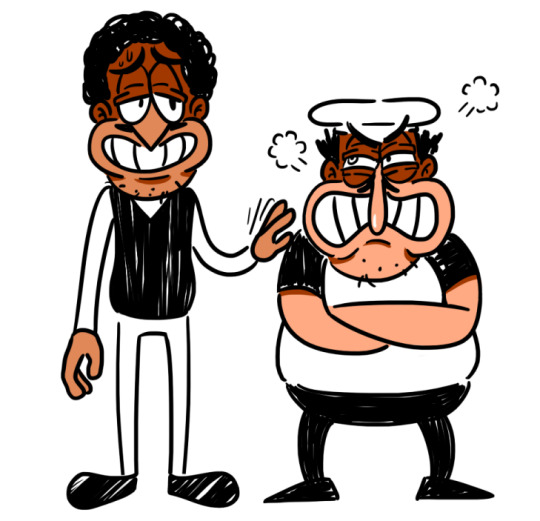
I put a little too much thought in Sy's direct familial relation to Peppino, so I went out of my way to draw the point of connection between them.
The guy on the left is Ignacio, who I imagine is Peppino's younger half-brother. They're opposites in plenty of ways (Ignacio being taller and skinnier, having more ""intellectual"" interests and an office job, and being very even-tempered in direct contrast to Peppino's anxiety or simmering anger), but there's a tension between them that stems from Ignacio being their mother (the parent they share)'s favorite.
Peppino may not like Ignacio much, but he takes an odd shine to Ignacio's only child, Sy—who is a lot more sour in personality than their dad. Peppino and Sy bond over both being tired, easily annoyed, and "getting" the other's grievances with… Well, a lot of things. They enjoy grumbling about things together.
37 notes
·
View notes
Text
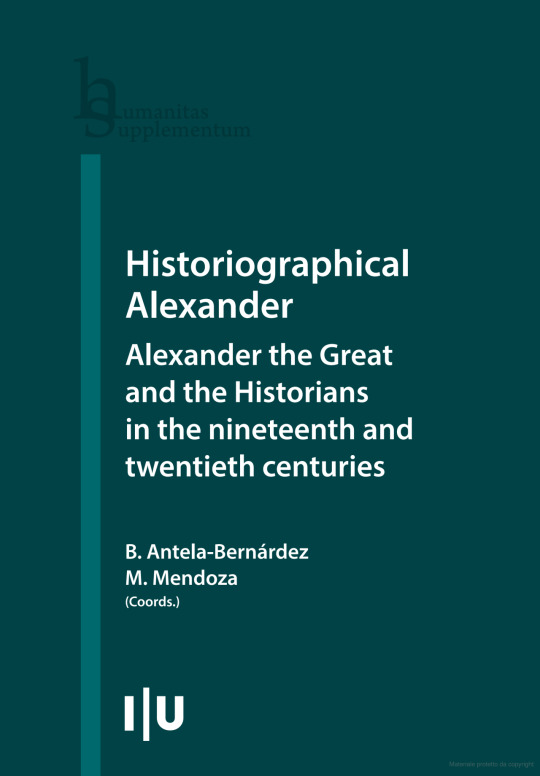
#Historiographical Alexander: Alexander the Great and the Historians in the nineteenth and twentieth centuries#Imprensa da Universidade de Coimbra / Coimbra University Press#Coimbra University Press#alessandro magno#alessandro iii di macedonia#alexander the great#prossime uscite#alessandro il grande#alessandro il macedone#alexander the conqueror#alessandro il conquistatore#alexander iii of macedon#alexander of macedon# Antonio Ignacio Molina Marín#Marc Mendoza#Eran Almagor# Jaakkojuhani Peltonen#Borja Antela Bernárdez#Guendalina D.M. Taietti
0 notes
Text
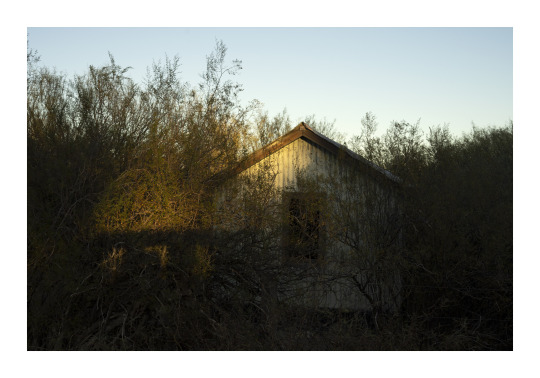

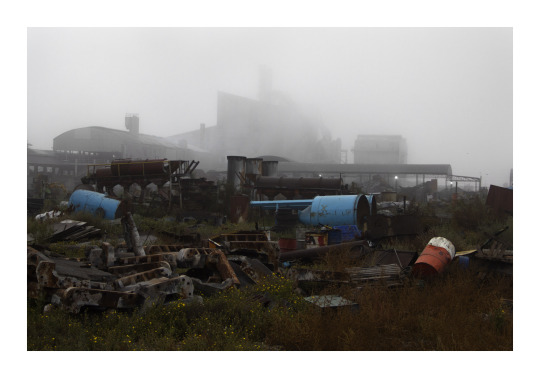


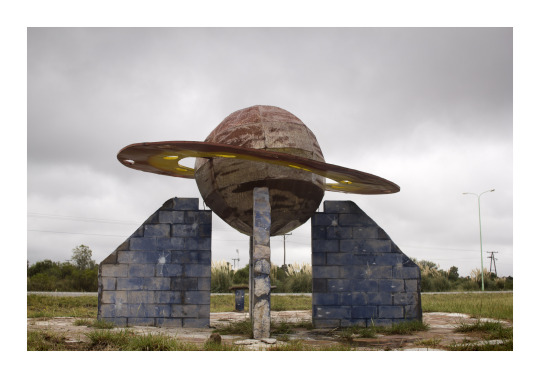




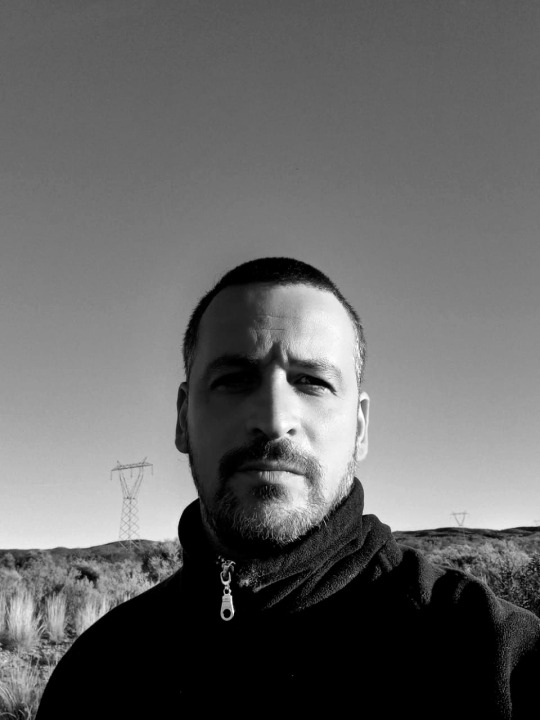
2021
OLA 4/ César Lafalce
Nació en Buenos Aires en 1978 y desde 2011 reside en Luján de Cuyo, Mendoza. Se formó en el taller de Daniel Barraco y fue becario en el programa de estudios Proyecto Imaginario Interior dirigido por Martín Estol y María Elena Méndez donde realizó talleres con Ignacio Iasparra, Silvia Gurfein, Lorena Fernández, Alfredo Srur y Eduardo Stupía, entre otros. Participó en diversas muestras individuales y grupales. Fue finalista en el Premio FOLA “Pampa Energía” (2019), Salón Provincial de Artes Visuales Vendimia (2018), 102° Salón Nacional de Artes Visuales (2013), Premio Caraffa de Fotografía Contemporánea (2018), Premio Ayerza de la Academia Nacional de Bellas Artes (2014 y 2018), Bienal Arte x Arte (2015), etc. Obtuvo el primer premio en el concurso de la AACS “Pensar el suelo desde Latinoamérica, España y Portugal” (2012) y una Mención en el 104° Salón Nacional de Artes Visuales (2015). Actualmente se encuentra trabajando en el proyecto de edición de un libro de fotografías y continúa desarrollando la serie “Apuntes de un viajante”.
0 notes
Text
141 aspirantes a legisladores federales renuncian a sus apoyos económicos

CIUDAD DE MÉXICO * 5 de marzo, 2024.
) Apro
Diputadas y diputados que participarán en la elección consecutiva manifestaron su renuncia voluntaria a apoyos económicos, informó la Cámara Baja en un comunicado.
La Mesa Directiva informó que 141 legisladores federales que participarán en la elección consecutiva en el proceso electoral 2023-2024 manifestaron su renuncia voluntaria a los apoyos económicos a que tienen derecho.
Estos apoyos consisten en asistencia legislativa, atención ciudadana, casa enlace, transporte y hospedaje y tarjeta Viapass para peaje, y dejarán de contar por ellos por el periodo que comprende del 1 de marzo al 2 de junio.
De la cifra total, 45 son de Morena, 47 del PAN, 29 del PRI, 19 del PT y uno del PRD.
Estos son los legisladores que expresaron su deseo de renunciar a los apoyos:
Morena
César Agustín Hernández Pérez, Carol Antonio Altamirano, Reyna Celeste Ascencio Ortega, Ana Elizabeth Ayala Leyva, Manuel de Jesús Baldenebro Arredondo, Rocío Natalí Barrera Puc, Juan Ángel Bautista Bravo, María del Carmen Bautista Pelaéz, Bruno Blancas Mercado, Francisco Javier Borrego Adame, Héctor Armando Cabada Alvidrez, Óscar Cantón Zetina, Olegaria Carrazco Macías, Mario Miguel Carrillo Cubillas, Alejandro Carvajal Hidalgo, Favio Castellanos Polanco, Olga Leticia Chávez Rojas, Armando Contreras Castillo, Armando Corona Arvizu, Roberto Ángel Domínguez Rodríguez, Olga Juliana Elizondo Guerra, Leonel Godoy Rangel, Juanita Guerra Mena, Rosa Hernández Espejo, Arturo Roberto Hernández Tapia, Mónica Herrera Villavicencio, Irma Juan Carlos, Mayra Alicia Mendoza Álvarez, Moisés Ignacio Mier Velazco, Evangelina Moreno Guerra, Julio Cesar Moreno Rivera, Blanca Araceli Narro Panameño, Araceli Ocampo Manzanares, Pedro David Ortega Fonseca, Jaime Humberto Pérez Bernabe, Sonia Rincon Chanona, Carlos Sánchez Barrios, Azael Santiago Chepi, Paola Tenorio Adame, Teresita de Jesús Vargas Meraz, Manuel Vázquez Arellano, Julieta Kristal Vences Valencia, Dulce María Corina Villegas Guarneros, Merary Villegas Sánchez y Joaquín Zebadúa Alva.
PAN
Marco Humberto Aguilar Coronado, Laura Patricia Ahedo Bárcenas, Salvador Alcántar Ortega, Marco Antonio Almendariz Puppo, Daniela Soraya Álvarez Hernández, Ana Teresa Aranda Orozco, Itzel Josefina Balderas Hernández, Ana María Balderas Trejo, Carolina Beauregard Martínez, María Teresa Castell de Oro Palacios, Román Cifuentes Negrete, Erika de los Ángeles Díaz Villalón, Yesenia Galarza Castro, María Josefina Gamboa Torales, Pedro Garza Treviño, Mariana Gómez del Campo Gurza, Carmen Rocío González Alonso, Karla Verónica González Cruz, Diana Estefanía Gutiérrez Valtierra, Genoveva Huerta Villegas, Jorge Ernesto Inzunza Armas, Julia Licet Jiménez Angulo, Berenice Juárez Navarrete, Diana María Teresa Lara Carreón, José Elías Lixa Abimerhi, Noemí Berenice Luna Ayala, Gustavo Macías Zambrano, Esther Mandujano Tinajero, Noel Mata Atilano, Miguel Ángel Monraz Ibarra, Sarai Núñez Cerón, Ali Sayuri Núñez Meneses, María Elena Pérez-Jaén Zermeño, Gabriel Ricardo Quadri de la Torre, Éctor Jaime Ramírez Barba, Sonia Rocha Acosta, Juan Carlos Romero Hicks, Martha Estela Romo Cuéllar, Paulina Rubio Fernández, Ana Laura Sánchez Velázquez, Rodrigo Sánchez Zepeda, Luis Gerardo Serrato Castell, Armando Tejeda Cid, Héctor Saúl Téllez Hernández, Fernando Torres Graciano, Roberto Valenzuela Corral y Margarita Ester Zavala Gómez del Campo.
PRI
Norma Angélica Aceves García, Yeimi Yazmín Aguilar Cifuentes, María de Jesús Aguirre Maldonado, Pablo Guillermo Angulo Briceño, Karla Ayala Villalobos, Frinné Azuara Yarzábal, Sue Ellen Bernal Bolnik, Jaime Bueno Zertuche, María del Refugio Camarena Jáuregui, Adriana Campos Huirache, Alma Patricia Cardona Ortiz, Eufrosina Cruz Mendoza, Carolina Dávila Ramírez, Juan Francisco Espinoza Eguia, Xavier González Zirión, Marcela Guerra Castillo, Fuensanta Guadalupe Guerrero Esquivel, Johana Montcerrat Hernández Pérez, Ana Lilia Herrera Anzaldo, Jazmín Jaimes Albarrán, Roberto Carlos López García, Tereso Medina Ramírez, Rubén Ignacio Moreira Valdez, Rafael Alejandro Moreno Cárdenas, Mariana Erandi Nassar Piñeyro, Lorena Piñón Rivera, María Elena Serrano Maldonado, Maribel Guadalupe Villaseñor Dávila y Cynthia Iliana López Castro.
PT
Lilia Aguilar Gil, José Alejandro Aguilar López, Mary Carmen Bernal Martínez, Francisco Amadeo Espinosa Ramos, Alfredo Femat Bañuelos, José Gerardo Rodolfo Fernández Noroña, Irma Yordana Garay Loredo, Margarita García García, Jesús Fernando García Hernández, Maribel Martínez Ruiz, Luis Enrique Martínez Ventura, Brígido Ramiro Moreno Hernández, Magdalena del Socorro Núñez Monreal, Jorge Armando Ortiz Rodríguez, Ángel Benjamín Robles Montoya, Ana Karina Rojo Pimentel, María de Jesús Rosete Sánchez, Reginaldo Sandoval Flores y Dionicia Vázquez García.
PRD
Francisco Javier Huacus Esquivel.
] Síguenos en facebook.com/acapulcopress.news
) Síguenos en facebook.com/angelblanco.press
] Síguenos en ) acapulcopress.com
Read the full article
0 notes
Text
*GOBERNADORES VS MILEI*
El gobernador de Chubut, Torres, asegura que Milei le retuvo más de un tercio de la coparticipación que le corresponde por ley y amenaza con no entregar el petróleo y gas de su provincia al resto del país.
Firmaron los Goberndores de la Patagonia:
Gustavo Melella, gobernador de Tierra del Fuego.
Sergio Ziliotto, gobernado de La Pampa:
Claudio Vidal, gobernador de Santa Cruz.
Rolando Figueroa, gobernador del Neuquén.
Ignacio Torres, gobernador del Chubut.
Alberto Weretilneck, gobernador
El comunicado Oficial de las provincias del sur, fue fuertemente respaldado por los Gobernadores de Juntos por el Cambio, Gobernadores Perronistas y Gustavo Sáenz
Los gobernadores de Juntos por el cambio que respaldan a las provincias del sur:
CABA: Jorge MACRI
CHACO: Leandro ZDERO
CORRIENTES: Gustavo VALDÉS
ENTRE RÍOS: Rogelio FRIGERIO
JUJUY: Carlos SADIR
MENDOZA: Alfredo CORNEJO
SAN JUAN: Marcelo ORREGO
SAN LUIS: Claudio POGGI
SANTA FE: Maximiliano PULLARO
UN PRESIDENTE QUE CREE QUE FUE PUESTO PARA DIVIDIR EL PAÍS.
https://www.facebook.com/share/p/iQEowy8Aomanzjtc/?mibextid=oFDknk
0 notes
Text
Gabino Morales Entrará en los Pluris Federales de Morena
El premio de consolación le cayó al ex delegado de los programas del bienestar, Gabino Morales Mendoza, luego de que en la lista al Senado de la República apareciera su compañera de fórmula Rita Ozalia Rodríguez Vázquez con Juan Ignacio Segura Morquecho.
El pasado jueves, Morena dió a conocer la lista oficial de las candidaturas plurinominales, de acuerdo a las circunscripciones en las que está…
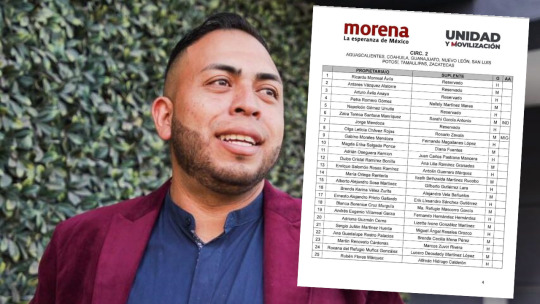
View On WordPress
0 notes